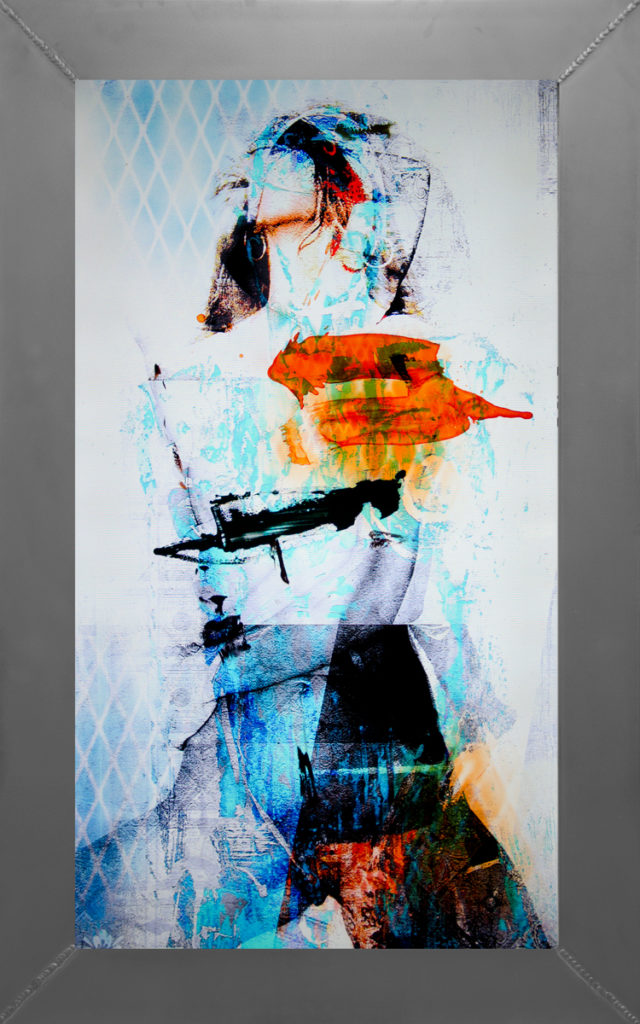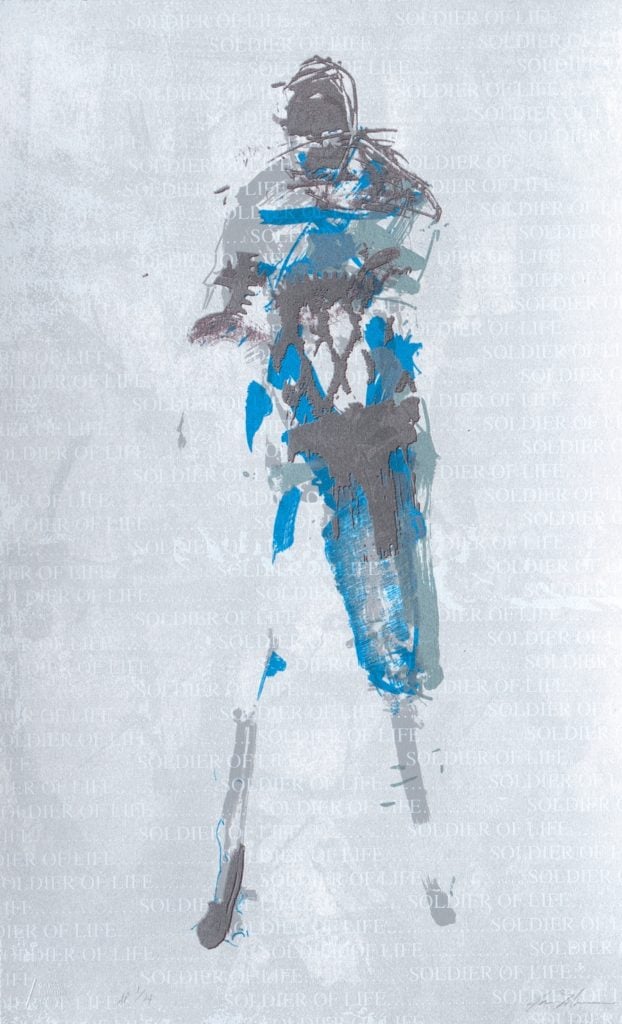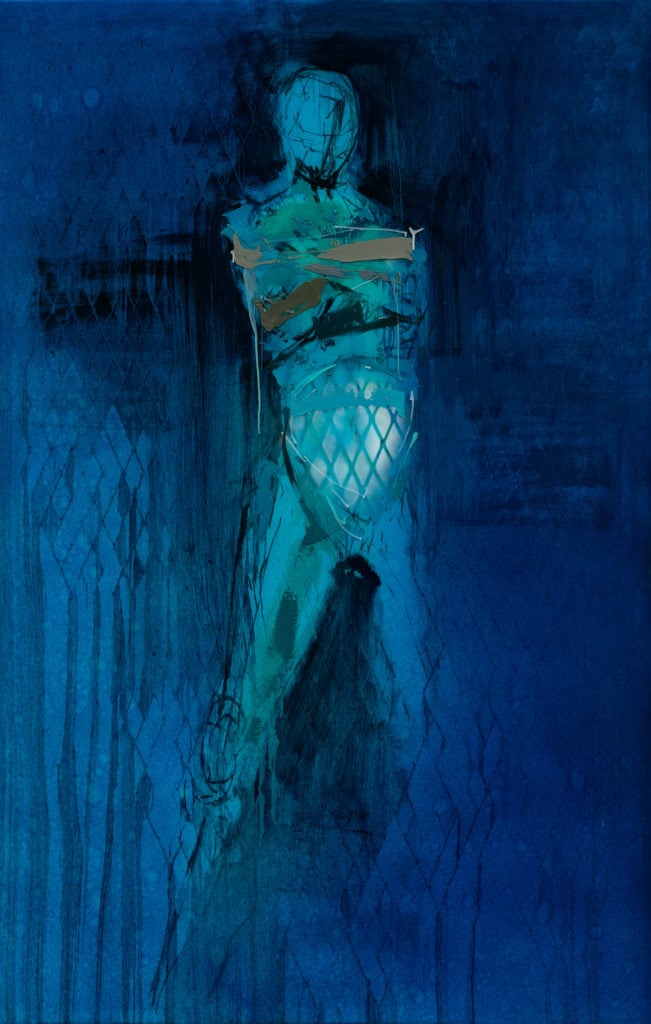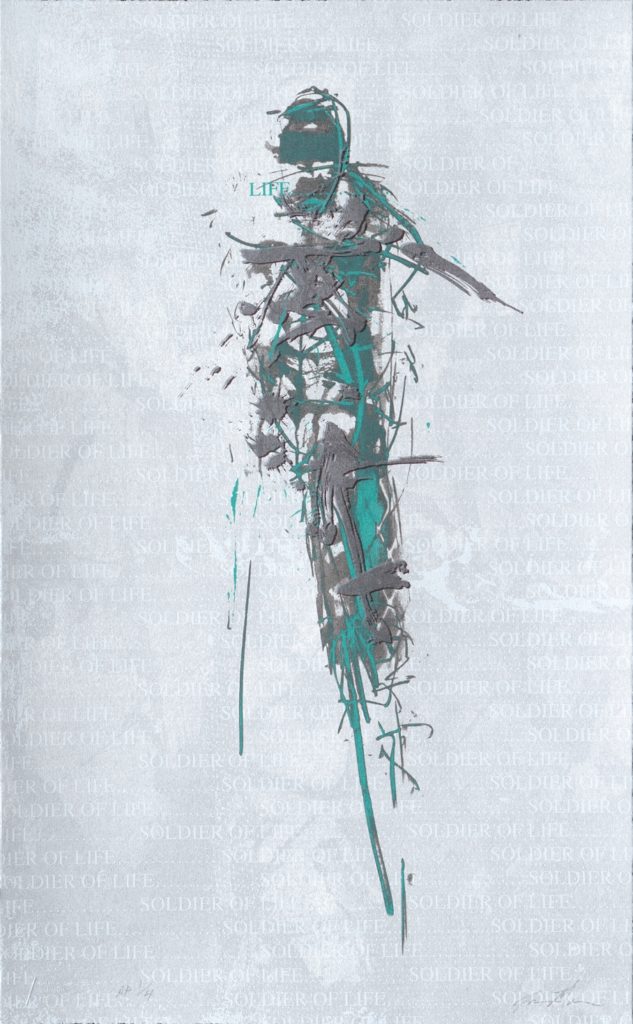‘Life Can Be a Monumental Struggle’: How Artist Jason Myers’s New Screen Print Series Takes on the Trials and Triumphs of Daily Life


Artnet Gallery Network

In our ideologically polarized time, art that emphasizes shared experience risks coming off as controversial or naive, but it’s a mantle artist Jason Myers has taken up with enthusiasm in his first series of screen prints, “Soldiers of Life.” The artist, who shows with New York- and Indianapolis-based gallery Long-Sharp, recently sat down with us to discuss the series and his inspirations.

Jason Myers, Soldiers of Life (Water). Courtesy of Long-Sharp Gallery.
In your words what are “Soldiers of Life”?
The title is a metaphor for all of us. The journey of life can be a monumental struggle. Every person’s path through life has its own unique conflicts that must be overcome. Although those conflicts can sometimes be physical in nature, more often we face psychological challenges. Through perseverance, we embrace the trial of tomorrow.
You attended a military high school. Do you think the idea of “soldiers” in any way stems from that experience?
Yes, I am sure my military school experience influences my art and my life in many direct ways. Military school was about endurance, overcoming obstacles, and. most importantly. mental perseverance.
I also have a long history in my family of military service. My father served in the three Gulf wars and my grandfather served in World War II. My great uncle, Herald Myers, was a B-52 test pilot in the air force before working for NASA, where he was in charge of the moon landing capsule recovery team. Another great uncle, Herald Urey, was an American physical chemist whose pioneering work on isotopes earned him the Nobel Prize in chemistry in 1934 for the discovery of deuterium.
Although there is this direct reference to the military in my personal history, I use the soldier only in a metaphorical way.
You’re mostly known as a painter and sculptor and you worked minimally with printing in the 1990s. Why did you decide to venture into the multi-layer silkscreen printing process and what was that like?
During the last year I had the fortune of being introduced to master printer Gary Lichtenstein (no relation to Roy Lichtenstein) and had the chance to work together. From the start, we had a dynamic working relationship. With his overwhelming knowledge of the process of screen-printing, and my intuitive layering methodology, we hit the ground running.
I found screen printing was as immediate as painting on canvas with no clear end in sight. Building the image layer by layer, in a reactionary way, feels so natural to me and is more immediate in some ways than painting. Employing my painting methods, levels of transparency in layers, and even direct brushwork on the screens makes for a direct transition between painting and printmaking with the additional ability to make multiple works.

Jason Myers, Salacia #21. Courtesy of Long-Sharp Gallery.
Do you have a favorite work in the series?
Blind Capitulation is currently my favorite. This series has been ongoing for about five years. I refer to these images as virtual paintings. Physically, it is a two-dimensional work that takes the presence of an object in three-dimensional form. It speaks the same language as my paintings and sculptures but this work also includes painting, photography, video, and sculpture, which introduce the elements of time and movement. The viewer is offered the experience of more than a frozen moment of time which the viewer to experience them as a whole over a period of time.

Jason Myers, Soldiers of Life (Earth). Courtesy of Long-Sharp Gallery.
Who are the most influential artists to your practice?
Andy Warhol has probably influenced me in the same way his work influences most artists. The universality of his work is a goal of every artist. We want to create a visual language that has the ability to connect with everyone. My figures attempt to employ a similar language as his Coke bottles and Campbell’s soup cans in that the visual stimuli have a universal trigger.
How do these works relate or differentiate from your previous bodies of work?
Although I shift gears a lot in my work, this series is a direct extension of the work I am producing in other mediums. The recent “Soldiers of Life” shifts slightly in its directness to the metaphorical content. I often incorporate text into my work, mostly handwritten, but I chose to make the message more literal, graphic, and redundantly concise. The written dialogue is usually fuzzy details and thoughts or memories, buried within the excess of itself, and leaving the viewer to decipher the recollections through a discovery process that grows over time.
We live in a very ideologically polarized time. Why do you think it’s important to remember the shared human experiences and how can art do this?
Soldiers of Life is about the personal world within ourselves, and relating to others’ personal struggles, simply by thinking of our own.
In my work, the viewer is encouraged to engage directly with the process. The raw expression in the mark-making and use of materials in their own natural processes create layers of visible construction, which remain accessible to the spectator. The spaces which contain the figures are more abstract interpretations and reminiscent of psychological states. In a simple way this allows a direct connection between my creative energy and also allows the viewer to translate into their own ideology, memories, and understanding of life.